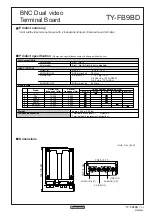
136
Intel NetStructure Cache Appliance Administrator’s Guide
For information on how to enable parent caching from the Manager UI, see the
parent caching section on the Configure: Routing page (see Setting HTTP
parent caching options‚ on page 40). For information on how to enable parent
failover using the command-line interface, see Controlling parent proxy caching‚
on page 89.
Figure 7
A cache hierarchy in action
ICP cache hierarchies
Internet Cache Protocol (ICP) is a protocol for proxy caches to exchange
information about their content. ICP query messages ask other caches if they are
storing a particular URL. ICP response messages reply with a hit or miss answer.
Peer,
sibling, and
parent caches
ICP hierarchies employ sibling caches as well as parent caches. Sibling caches
exist at the same hierarchical level, while parent caches exist one level up in the
hierarchy. A cache exchanges ICP messages only with specific ICP peers. An ICP
peer can be a sibling cache or a parent cache.
If the Intel NetStructure Cache Appliance has ICP enabled, it sends out ICP
queries to its sibling caches in the event of a cache miss on an HTTP request. If
there are no hits on siblings, the appliance sends ICP queries to ICP parents. If
there are no hits on ICP parents, the appliance forwards the request to its HTTP
parents. If there are no HTTP parent caches established, the appliance forwards
the request to a selected ICP parent cache (which resolves the request by
communicating with the origin server).
cache
regional
miss
cache
local
request
forwarded request
returned
document
Baltimore
Intel NetStructure Cache Appliance
New York
Intel NetStructure Cache Appliance
hit
parent cache
1
2
3
end user
















































